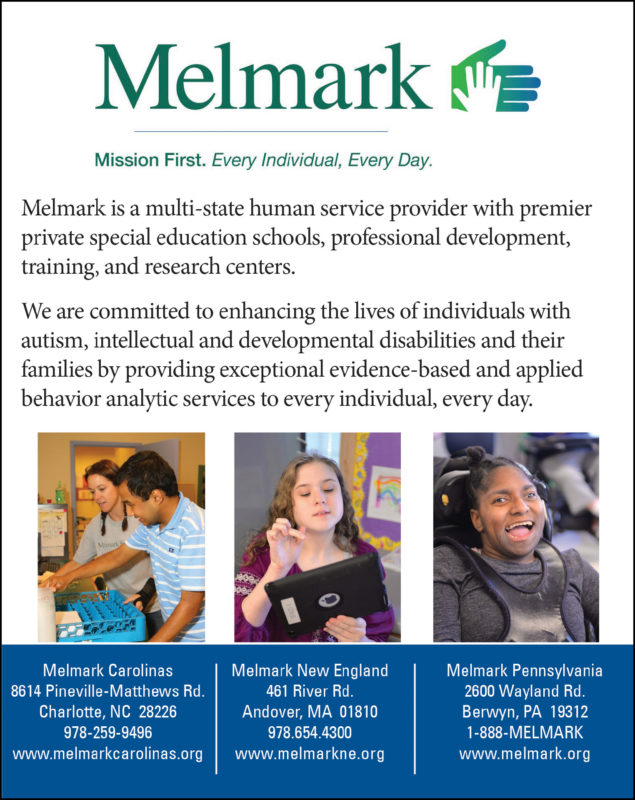Community engagement is a broad term that is informed by an ecological perspective that one’s behavior is impacted by larger social, cultural and physical environments. Community engagement has been defined as “the process of working collaboratively with and through groups of people affiliated by geographic proximity, special interest, or similar situations to address issues affecting the well-being of those people” (Centers for Disease Control and Prevention [CDC], 1997, p 9). Community engagement has the goal of bringing various stakeholders together to work to change policy, increase resources, and inform programs and practices to improve health and behavior outcomes. As the incidence of Autism Spectrum Disorder (ASD) has continued to increase (Baio et al., 2018), community engagement has also increased. Large scale community engagement may include public awareness efforts such as the Autism Speaks 100 Day Kit for Young Children and increases in research funding (Singh et al., 2009). However, it may also include smaller scale efforts such as home-based intervention geared towards improving outcomes for one individual with ASD. This article will focus on the role of home-based intervention services as a means of increasing community engagement in individuals with ASD.

Jessica Everett, PhD, BCBA-D, LABA

Barbara O’Malley Cannon, PhD, BCBA
Home and Community Services
Home-based services for individuals with ASD have been implemented for several decades. Early studies on the efficacy of treatment approaches such as applied behavioral analysis (ABA) found that services provided within home settings were effective in improving functioning in children with ASD (Lovass, 1987, McEachin, Smith &Lovass, 1993). ABA is now recognized as the primary evidence-based treatment for ASD (National Research Council, 2001) and may be effectively provided within educational, home, and various community settings. Home based services allow for a collaborative effort between schools, parents and community professionals. With services provided directly in the home and community, families have increased access to support while forging relationships in the community and teaching their children relevant skills.
The benefit of home-based intervention carries across many areas. First is that intervention within home and community settings facilitates targeting of skills primary to the features of ASD. One of the primary deficits in the diagnostic presentation of ASD is lack of social reciprocity and perspective taking. Within various community settings, individuals with ASD often struggle to understand social norms and accepted standards of behavior. Moreover, many present with challenging behavior that interferes with their ability to demonstrate skills within the often-unpredictable community environment. Targeting intervention within a home or community setting encourages identification of skills that are socially valid and relevant to that setting. It also allows for skill generalization and the opportunity to take advantage of naturalistic learning opportunities.
Another benefit to intervention within home and community settings is increasing access to recreational and leisure activities. Most agree that there are many benefits of leisure and recreational activities for individuals with ASD. As one parent reported in Schliein et al., (2014, 66), “We were restraining <child’s name> every day to prevent him from doing property damage or harm to himself. When we started a program of intensive physical activity, those things melted away, it’s really hard to explain how important the benefits are. It has truly changed our lives.” Other benefits noted by researchers, beyond the health benefits of recreational activities, include the increased opportunities for social interactions, increased feelings of self-esteem and belonging, as well as overall improvement in quality of life (Schleien et al, 2014; Thompson & Elmira, 2011). These benefits to the individual may also lead to increased opportunities for community involvement for others with ASD and more recreational and leisure programs developing resources to successfully include individuals with ASD.
Another benefit of home and community-based programs is the opportunity for skill generalization. Generalization of skills from the home to the community occurs across both skills taught to parents and to the individual with ASD. Parents are coached through applying principles in the community while supported by trained professionals. For example, a young man within our program receiving weekly home-based services learned to follow a written “to do” for his afternoon routine at home. Initially the behavior technician provided prompting and then prompting shifted to being provided by the parent with the skill eventually being completed independently. The skill of following a written “to do” list was then generalized to a grocery store shopping list and steps to making a purchase. Each progression of fading support was based on data collected at each session and parents were supported to practice the skill in between sessions. Ultimately, both student and parent gained in confidence and continued to expand community experiences to the point of the student traveling independently with a youth group and gaining supported employment. Programs of this type can be individualized to address any number of skills across people and settings.
Barriers
Despite the increasing prevalence of ASD and growth in scientific understanding as well as public awareness, there continue to be barriers to full community engagement for this population. Parents often struggle with limited access and feelings of isolation. Thompson and Elmira (2011) note, “how one squares the circle between the principal of full inclusion and meeting practical needs of family is uncertain” (p. 75). Data from parent focus groups on the topic of community engagement uncover similar themes. Families report frustration and fatigue at constantly needing to fight for their children’s right to participate while they also fear negative attitudes toward their children and worry about their safety. Additionally, they are concerned that professionals in community agencies are not well trained to deal with their children, and rarely make accommodations or modifications in order to facilitate participation. Therefore, they continue to be torn between full participation or settling for participation within specialized settings in the community. Even within specialized settings, parents state that they continue to run into obstacles such as inadequate understanding of ASD and inability to manage challenging behaviors. However, parents continue to value and advocate for opportunities for their children to have what one parent described as those infrequent yet magical moments of complete acceptance by their community (Russell, 2003 LaVigna, & Wills, 2005, Thompson & Elmira, 2011, Schleien, et al, 2014).
Lavigna and Willis (2005) suggest that a positive behavioral support model for challenging behaviors breaks down barriers to community engagement. These strategies are based on a Functional Behavior Assessment that determines the function of behavior within a variety of contexts including community settings. Such an approach is often central to home services and includes providing training for parents in positive behavioral support strategies. These include proactive strategies such as environmental changes, systematic instruction, and schedules of reinforcement. Reactive or consequence strategies are subsequently developed to decrease the likelihood the maladaptive behavior will result in access to reinforcement.
Summary
Community engagement for any individual promotes feelings of belonging, and contentment as well as increasing quality of life. Achieving meaningful participation in the community is frequently a struggle for individuals with ASD. Provision of services within home-settings may help in the generalization of skills to community settings, thereby increasing community engagement for individuals with ASD. Home-based intervention services allow for increased parent training opportunities, the ability to generalize skills, and opportunities to support individuals with ASD as they generalize their skills to various community settings. Home based services are a means to support families and students in the development of skills and community engagement across the life span.
Barbara O’Malley Cannon, PhD, BCBA, is Director of Consultation Services and Jessica Everett, PhD, BCBA-D, LABA, is Senior Educational and Behavioral Consultant and Licensed Psychologist at Melmark. For more information, visit www.melmark.org.
References
Baio, J., Wiggins, L., Christensen, D.L., et al. Prevalence of Autism Spectrum Disorder Among Children Aged 8 years- Autism and Developmental Disabilities Monitoring Network, 11 sites, United States, 2014. MMWR Surveill Summ 2018: 67 (no. SS-6): 1-23.
Centers for Disease Control and Prevention. Principles of community engagement (1st ed.). Atlanta (GA): CDC/ATSDR Committee on Community Engagement, 1997.
LaVigna, G. and Willis, T. (2005), “A positive Behavioural Support Model for Breaking the Barriers to Social and Community Inclusion.” Tizard Learning Review, 10 (2), 16-23.
Lovass, O. I. (1987), Behavioral Treatment and Normal Educational and Intellectual Functioning in Young Autistic Children. Journal of Consulting and Clinical Psychology, 55 (1) 3-9.
McEachin, J.J., Smith, T., & Lovass, O.I. (1993). Long-term outcome for children with autism who received early intensive behavioral treatment. American Journal on Mental Retardation 97 (4), 359-372.
National Research Council (2001), Educating Children with Autism. Committee on Educational Interventions for Children with Autism. Catherine Lord and James P. McGee, Eds. Division of Behavioral and Social Sciences and Education. Washington, D.C: National Press.
Russell, P. 2003. ‘Access and achievement of social exclusion’? Are the government’s political policies working for disabled children with their families? Children and Society 17: 215-25.
Schleien, S., Miller, K., Walton, K., Pruett, S. (2014). Parent perspectives of barriers to child participation in recreational activities. Therapeutic Recreation Journal. 48(1), 61-73.
Singh, J., Illes, J., Lazzeroni, L., Hallmayer, J. (2009). Trends in US Autism Research Funding. Journal of Autism and Developmental Disorders, 39: 788-795.
Thompson, D., & Emira, M. (2011). ‘They say every child matters, but they don’t’ : An investigation into parental and carer perceptions of access to leisure facilities and respite care for children and young people with autism spectrum disorders (ASD) or attention deficit, hyperactivity disorder (ADHD). Disability & Society, 26(1), 65-78.





